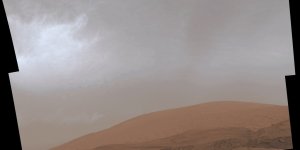| News / Space News |
Mysterious Population of Free-Floating Planets Spotted near Milky Way’s Center
Tantalizing evidence has been uncovered for a mysterious population of “rogue” (or “free-floating”) planets, planets that may be alone in deep space, unbound to any host star.

Mysterious Population of Free-Floating Planets Spotted near Milky Way’s Center. Photo: NASA/Ames/JPL-Caltech
The results include four new discoveries that are consistent with planets of similar masses to Earth.
The study, led by Iain McDonald of the University of Manchester, UK, used data obtained in 2016 during the K2 mission phase of NASA’s Kepler Space Telescope.
During this two-month campaign, Kepler monitored a crowded field of millions of stars near the center of our Galaxy every 30 minutes in order to find rare gravitational microlensing events.
The study team found 27 short-duration candidate microlensing signals that varied over timescales of between an hour and 10 days. Many of these had been previously seen in data obtained simultaneously from the ground. However, the four shortest events are new discoveries that are consistent with planets of similar masses to Earth.
These new events do not show an accompanying longer signal that might be expected from a host star, suggesting that these new events may be free-floating planets.
Such planets may perhaps have originally formed around a host star before being ejected by the gravitational tug of other, heavier planets in the system.
Predicted by Albert Einstein 85 years ago as a consequence of his General Theory of Relativity, microlensing describes how the light from a background star can be temporarily magnified by the presence of other stars in the foreground. This produces a short burst in brightness that can last from hours to a few days.
Roughly one out of every million stars in our Galaxy is visibly affected by microlensing at any given time, but only a few percent of these are expected to be caused by planets.
Kepler was not designed to find planets using microlensing, nor to study the extremely dense star fields of the inner Galaxy. This meant that new data reduction techniques had to be developed to look for signals within the Kepler dataset.
Co-author Eamonn Kerins of the University of Manchester also comments, “Kepler has achieved what it was never designed to do, in providing further tentative evidence for the existence of a population of Earth-mass, free-floating planets.
Now it passes the baton on to other missions that will be designed to find such signals, signals so elusive that Einstein himself thought that they were unlikely ever to be observed. I am very excited that the upcoming ESA Euclid mission could also join this effort as an additional science activity to its main mission.”
Confirming the existence and nature of free-floating planets will be a major focus for upcoming missions such as the NASA Nancy Grace Roman Space Telescope, and possibly the ESA Euclid mission, both of which will be optimized to look for microlensing signals. (Tasnim News Agency)
YOU MAY ALSO LIKE





